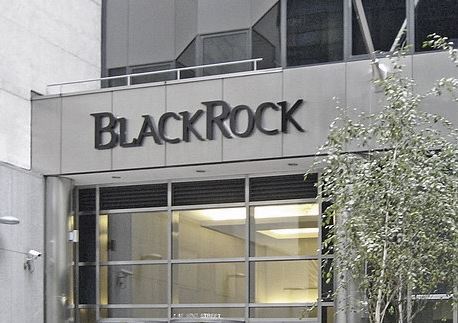By forcing people to put money into pension funds in a form of investment that they weren’t necessarily comfortable with, governments created vast piles of money that was essentially left unguarded on the beach in a bay with a hundred pirate ships. Sure, there were regulatory agencies and accountants up the kazoo, but money is also power: the paper dollar would get returned to the owner, but the whole time it was out of his hands, its power was being used against him.
In a free market, millions of voters can vote with their wallet. It’s a form of democracy. But for hapless sleepy investors in a pension plan — sometime in the 1980s that power to choose the kind of industries and values they wanted to support was silently given away to a guy called Larry Fink and a few of his colleagues.
Snoozing-at-the-wheel, citizens voted for cheap energy every two years, while their money voted for “ESG” every day. And ESG is the expensive Environmental, Social, Governance kind of electricity which freezes your peas AND corrects the weather (in theory).
The size of the pension funds managed by the likes of BlackRock, Vanguard and StateStreet became The Financial Swamp Monster:
BlackRock’s tyrannical ESG agenda
By John Masko, UnHerd
When the UN invited global financial institutions to sign onto the Principles for Responsible Investment (PRI) in 2007, the total global assets managed by ESG-minded investing vehicles was around $10 trillion. By 2020, a mere 13 years later, that has grown to more than $30 trillion worldwide and more than $17 trillion in the US. New private equity firms and investment outfits devoted purely to ESG — such as Al Gore’s Generation Investment — were springing up every year, and most large US investment firms began offering ESG-mandated mutual funds, leading Bloomberg in 2021 to project $53 trillion invested in ESG by 2025.
As the ESG agenda took hold, the individual investor increasingly found himself shunted aside. Admittedly, the roots of this shift lay in the early Eighties, when federal proxy voting rules were changed to allow fund managers such as BlackRock to vote on behalf of their clients. The idea was a good one at the time, in that it recognised that few individual investors have the time to attend shareholder meetings or the wherewithal to make their views known to company leadership. But it handed vast power to investment companies — admittedly under the understanding that they would vote on behalf of their clients for one purpose only: the maximisation of profits and shareholder returns. It was, however, only a matter of time before this power was exploited.
Larry liked climate change, so BlackRock became the Monster Climate Police:
In 2020, BlackRock voted at 16,200 shareholder meetings on 153,000 company proposals. Frequently, these votes were against company management. According to the company’s own Investment Stewardship Annual Report: “In 2020, we identified 244 companies that were making insufficient progress integrating climate risk into their business models or disclosures. Of these companies, we took voting action against 53, or 22%. We have put the remaining 191 companies ‘on watch’. Those that do not make significant progress risk voting action against management in 2021.”
In the same report, BlackRock boasted of having voted against management more than 1,500 times for “insufficient diversity” in company management.
See how this works? All those crazy oil and gas companies who gave up without a fight were crazy for a reason.
Then Larry Fink realized he didn’t even need to control the votes. With $10 trillion in funds, BlackRock could be the Climate Mafia, and all he needed to do was write a letter every year telling the corporate world “nice business you have there, shame if something happened …”
In his words: “Companies must benefit all of their stakeholders, including shareholders, employees, customers, and the communities in which they operate.”
Allow me [John Masko] to translate: On behalf of millions of shareholders I’ve never met, I declare that they no longer truly own the companies they have invested in. Society does.
Remember how in October 2020 BlackRock told Australia to get rid of coal faster, and then the next year our conservative government agreed to commit us to Net Zero Targets that the voters didn’t ask for? That was the moment when our Treasurer effectively told us the Bankers bullied Australia into Net Zero. We know which banker he means. As I said then:
Australia is adopting Net Zero because the Global Financiers, who only want to save the world, would have refused to lend us money without jacking up our interest rates by 1.5%. The banker punishment would have meant a “17% investor exodus”. Fancy a stock market collapse?
The good news is that 25 US States have realized the game, and are fighting back. And word is spreading that ESG is a dog financially….
In 2022, eight of the top ten actively managed US ESG funds (including one of BlackRock’s) performed worse than the S&P 500. This demonstrates two things. First, that ESG funds are not some financial miracle. And second, that the performance of ESG funds is tightly bound to the tech industry, which had a terrible year in 2022.
Larry Fink has usually released his annual letter by now. He seems to be having trouble with 2023. Instead of a letter, the BlackRock CEO says attacks on ESG investing are getting ugly and personal.
h/t Reader
Pirate Fantasy:Image by 0fjd125gk87 from Pixabay
Photo by eflon on Flickr. Adapted. CC by 2.0. | Second BlackRock Photo Jim.henderson


